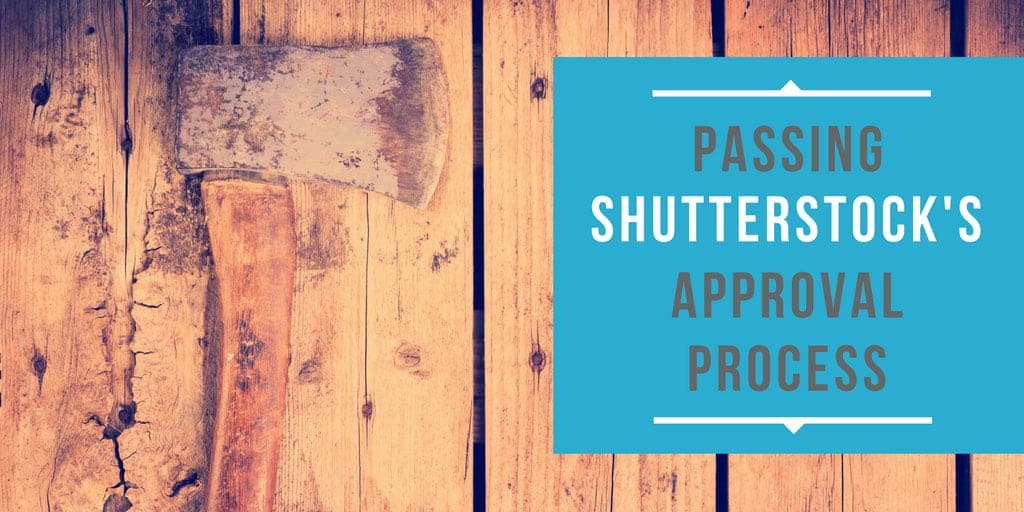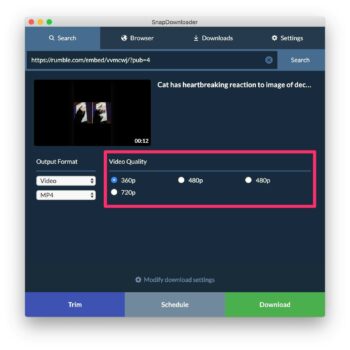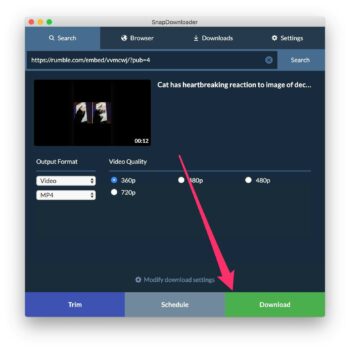Understanding the significance of Shutterstock photo approval is vital for all contributors. Whether you're a professional photographer or a hobbyist looking to monetize your skills, here's why approval matters:
- Monetization: Shutterstock is a marketplace where photographers can sell their images to a global audience. Approved photos are made available for purchase, allowing you to earn money with each download.
- Exposure: Approved photos are visible to a vast community of buyers, which means your work can reach a broad audience. This exposure can lead to more sales and greater recognition as a photographer.
- Portfolio Building: As you accumulate approved photos, you'll build a strong portfolio. A diverse and high-quality portfolio is more likely to attract buyers, making approval an essential step in your stock photography journey.
- Income Stream: Shutterstock approval provides contributors with a steady income stream. Your approved images can continue to earn royalties over time, providing a passive income source.
Getting your photos approved on Shutterstock is not only about showcasing your skills but also about making a living from your passion. It's a gateway to earning money, enhancing your photography portfolio, and establishing yourself in the stock photography industry.
Benefits of Getting Your Photos Approved
Here are some key benefits you'll enjoy once your photos are approved on Shutterstock:
| Benefit | Details |
|---|---|
| Increased Earnings | Approved photos can generate a steady stream of income as buyers download and license your images. |
| Global Exposure | Your photos are visible to a global audience, expanding your reach as a photographer. |
| Portfolio Growth | Building a diverse portfolio with approved photos enhances your professional image and attracts more buyers. |
| Passive Income | Once approved, your photos can continue to earn royalties without constant effort on your part. |
Approval on Shutterstock opens doors to numerous opportunities, from earning an income to building a successful photography career. In the following sections, we will guide you through the process of getting your photos approved, ensuring that you make the most of this platform.
3. Step-by-Step Guide
Now that you understand the importance of Shutterstock photo approval, it's time to embark on the journey of submitting and getting your photos approved. This step-by-step guide will walk you through the entire process, from creating your contributor account to increasing your chances of swift approval.
3.1. Creating a Shutterstock Contributor Account
Before you can start submitting your photos, you need to become a Shutterstock contributor. Here's how:
- Visit Shutterstock: Go to the Shutterstock contributor page and sign up for a contributor account.
- Complete Your Profile: Fill in your contributor profile with accurate and relevant information. This includes your personal details and payment preferences.
- Verify Your Identity: Shutterstock may require you to verify your identity to ensure compliance with their policies. Follow the verification process as instructed.
3.2. Uploading Photos
Once you have your contributor account set up, it's time to upload your photos:
- Preparing Your Photos: Ensure your photos meet Shutterstock's technical requirements, including resolution, format, and file size.
- Select Your Images: Use the Shutterstock contributor portal to select the images you want to submit. You can upload multiple images at once.
- Add Metadata: Include relevant keywords and descriptions for your images to enhance their discoverability. This step is critical for attracting potential buyers.
- Categorize Your Photos: Assign appropriate categories and attributes to each image to help buyers find what they're looking for.
3.3. Review and Approval Process
Once your photos are uploaded, they go through a review process by Shutterstock's team. Here's what you need to know:
- Review Criteria: Shutterstock reviewers assess images for quality, composition, and marketability. Ensure your photos meet their standards.
- Reasons for Rejection: Common reasons for rejection include poor image quality, over-editing, and intellectual property violations.
- Approval Timeline: The time it takes for your photos to be reviewed and approved can vary. We'll delve into average approval times in the next section.
3.4. Average Approval Times
Understanding the typical approval timeline can help manage your expectations:
| Type of Content | Average Approval Time |
|---|---|
| Photos | Usually within 1-7 days |
| Illustrations and Vectors | Generally within 7-14 days |
It's important to note that these times are approximate and can vary based on Shutterstock's workload and other factors. Being patient is key during this stage.
3.5. Tips for Faster Approval
If you're eager to get your photos approved quickly, consider these tips:
- Quality Matters: Submit high-quality, well-composed images that are in demand by Shutterstock's customer base.
- Minimal Editing: Avoid excessive editing and filtering. Shutterstock prefers natural-looking photos.
- Keyword Effectively: Use relevant and accurate keywords and descriptions to increase your photos' visibility.
- Respect Copyright: Ensure you have the proper rights and permissions for all elements in your images.
By following this step-by-step guide and keeping these tips in mind, you can enhance your chances of getting your photos approved on Shutterstock and jumpstart your journey as a successful stock photo contributor.
Also Read This: Looking for The Best VK Video Downloader for iOS? Here It Is
4. Frequently Asked Questions (FAQ)
As you navigate the Shutterstock approval process, you're likely to have questions. Here are some of the most frequently asked questions, along with detailed answers:
4.1. What Are the Common Reasons for Photo Rejection?
Shutterstock rejects photos for various reasons. Common causes of rejection include:
- Low Image Quality: Blurriness, noise, or poor lighting can result in rejection. Make sure your photos are sharp and well-exposed.
- Over-Editing: Excessive filters, heavy manipulation, or over-processed images may not meet Shutterstock's guidelines. Keep your edits natural and subtle.
- Trademark or Copyright Issues: Using copyrighted logos, trademarks, or recognizable intellectual property without proper permission can lead to rejection.
- Irrelevant or Insufficient Keywords: Failing to use relevant keywords or descriptions can affect your photos' discoverability and result in rejection.
4.2. Can I Resubmit Rejected Photos?
Yes, you can resubmit rejected photos after making necessary improvements. Take the reviewer's feedback into account, address the issues, and try again. However, avoid repeatedly resubmitting the same image without changes, as it may lead to suspension of your contributor account.
4.3. How Do I Check the Status of My Photo Submissions?
To check the status of your submissions, log in to your Shutterstock contributor account. You'll find a section that provides information on the status of your submitted images. It's essential to be patient, as the approval process can take some time.
4.4. Do I Retain Ownership of My Photos After Uploading?
Yes, you retain ownership of your photos even after uploading them to Shutterstock. You are granting Shutterstock a license to sell and distribute your images, but you still own the copyrights.
4.5. What Is the Earning Potential on Shutterstock?
Your earning potential on Shutterstock varies depending on several factors, including the quality and quantity of your approved images, their relevance to the market, and your ability to market your portfolio. On average, contributors earn between $0.25 to $2 per download, with higher rates for extended licenses and special content.
4.6. Can I Submit the Same Photos to Other Stock Photo Websites?
Yes, you can submit the same photos to multiple stock photo websites. This practice, known as multi-platforming, allows you to maximize your exposure and earnings. However, be sure to review the policies of each platform you use to ensure compliance.
These frequently asked questions should provide you with valuable insights as you navigate the Shutterstock approval process. Remember that patience and a commitment to improving your skills and understanding the stock photography market are key to success in this field.
Also Read This: The Best Camera Gear for Travel Photography
5. Conclusion
Congratulations! You've reached the end of our comprehensive guide on how to get your photos approved on Shutterstock. We've covered a lot of ground, from the importance of approval to a step-by-step process and frequently asked questions. Now, let's recap the key takeaways and conclude your journey:
Key Takeaways
- Approval Matters: Shutterstock approval is essential for monetizing your photos, gaining exposure, and building a successful portfolio.
- Step-by-Step Guide: We've provided a detailed step-by-step guide for creating a contributor account, uploading photos, and understanding the review process.
- Approval Times: Approval times vary, with photos typically taking 1-7 days and illustrations/vectors around 7-14 days.
- Tips for Success: Follow our tips for faster approval, focusing on quality, minimal editing, effective keywording, and copyright compliance.
- FAQs: We've addressed common questions regarding photo rejection, resubmission, checking submission status, ownership, earnings, and multi-platforming.
As you venture into the world of stock photography, remember that success often comes with dedication and a commitment to improvement. Continue to refine your photography skills, stay updated with market trends, and regularly upload high-quality, in-demand images to maximize your earnings on Shutterstock.
Contributing to Shutterstock is not just about earning income; it's also about sharing your creativity with the world and gaining recognition as a photographer. Keep refining your art, understanding your audience, and adapting to the ever-evolving stock photo industry.
We hope this guide has been a valuable resource for your journey as a Shutterstock contributor. If you ever have more questions or need assistance, don't hesitate to reach out to Shutterstock's support team or explore further resources. Best of luck with your Shutterstock contributions, and may your photography endeavors be both rewarding and fulfilling!
6. Additional Resources
To support your growth as a Shutterstock contributor and enhance your understanding of the stock photography industry, we've compiled a list of valuable additional resources:
6.1. Shutterstock Contributor Academy
Shutterstock offers a comprehensive Contributor Academy, which is a hub of educational materials. Here, you can access webinars, tutorials, and articles that cover various aspects of stock photography, from image quality to keywording best practices. It's an excellent resource for honing your skills and staying updated with industry trends.
6.2. Photography Communities and Forums
Engaging with photography communities and forums can be highly beneficial. Websites like the Shutterstock Contributor Forum and platforms like Reddit's r/photography provide spaces to connect with other contributors, seek advice, and share experiences. Learn from your peers and gain insights into what works in stock photography.
6.3. Shutterstock Blog
The Shutterstock blog regularly publishes articles that delve into photography trends, industry news, and contributor success stories. Explore their blog to stay informed about the latest developments in the stock photography world and to gain inspiration for your work.
6.4. Adobe Stock Contributor Resources
If you're contributing to Shutterstock, you might also be interested in contributing to Adobe Stock, another prominent stock photo platform. Adobe Stock provides a range of resources, including guides on image requirements and best practices, helping you maximize your reach across multiple platforms.
6.5. Photography and Image Editing Software
Investing in high-quality photography equipment and image editing software can greatly enhance your work. Consider using software like Adobe Lightroom and Adobe Photoshop for image editing and post-processing. These tools provide advanced features for optimizing your images for the stock photo market.
Remember, the stock photography industry is dynamic and continually evolving. Staying informed, learning from your experiences, and networking with fellow contributors are essential steps in your journey to success. Explore these additional resources to expand your knowledge and skills, and apply what you learn to create stunning and marketable images that resonate with buyers on Shutterstock and other stock photography platforms.














